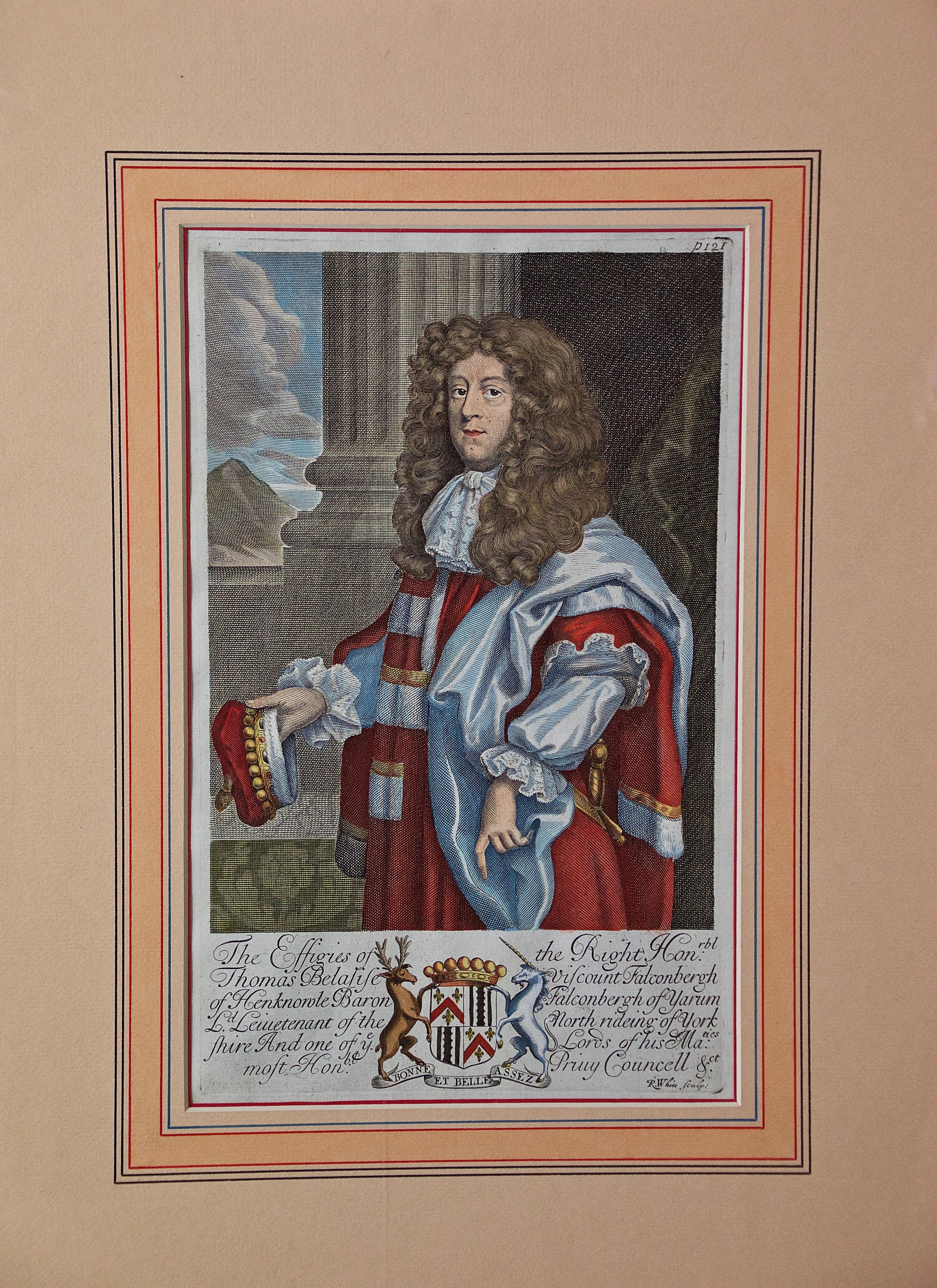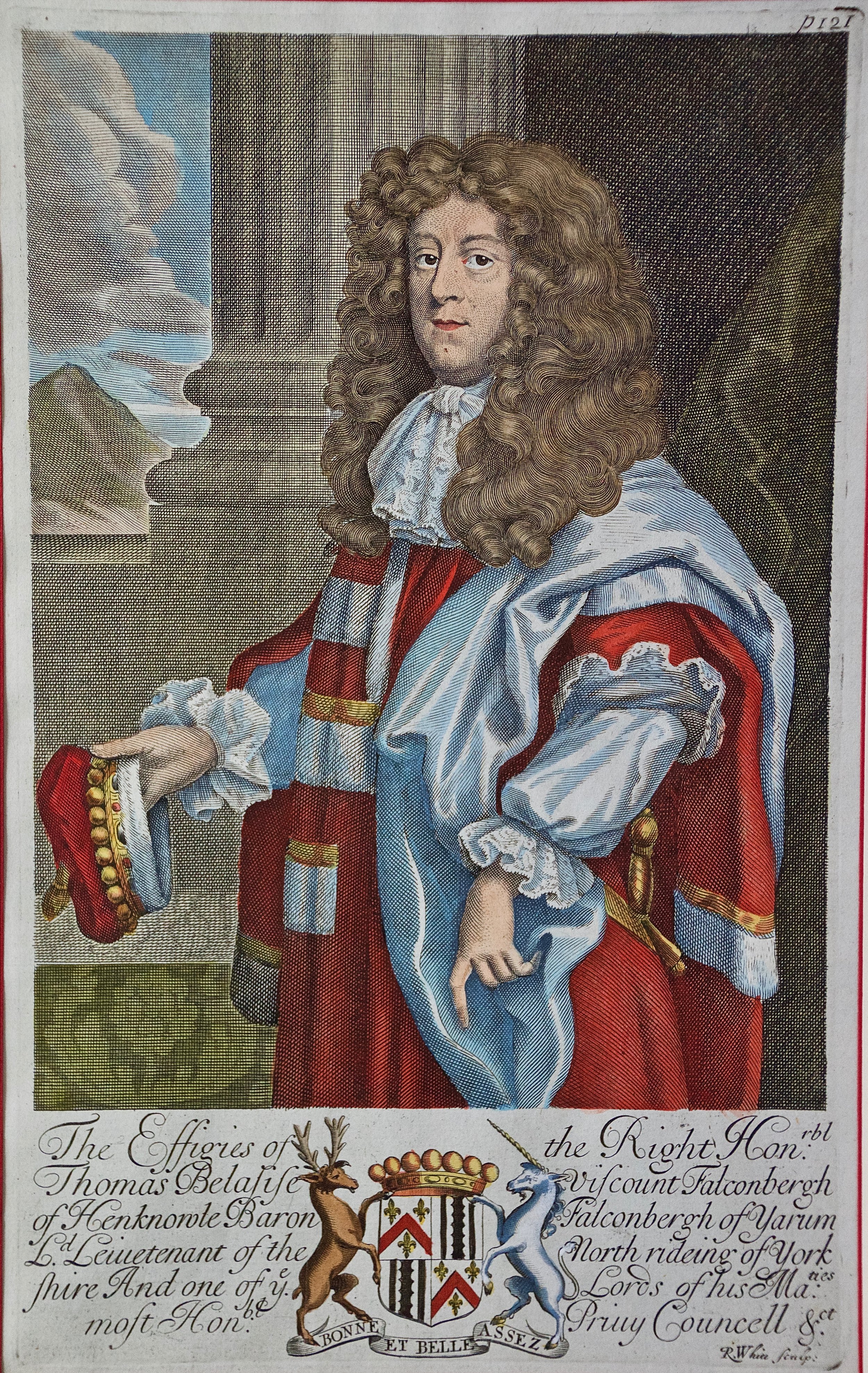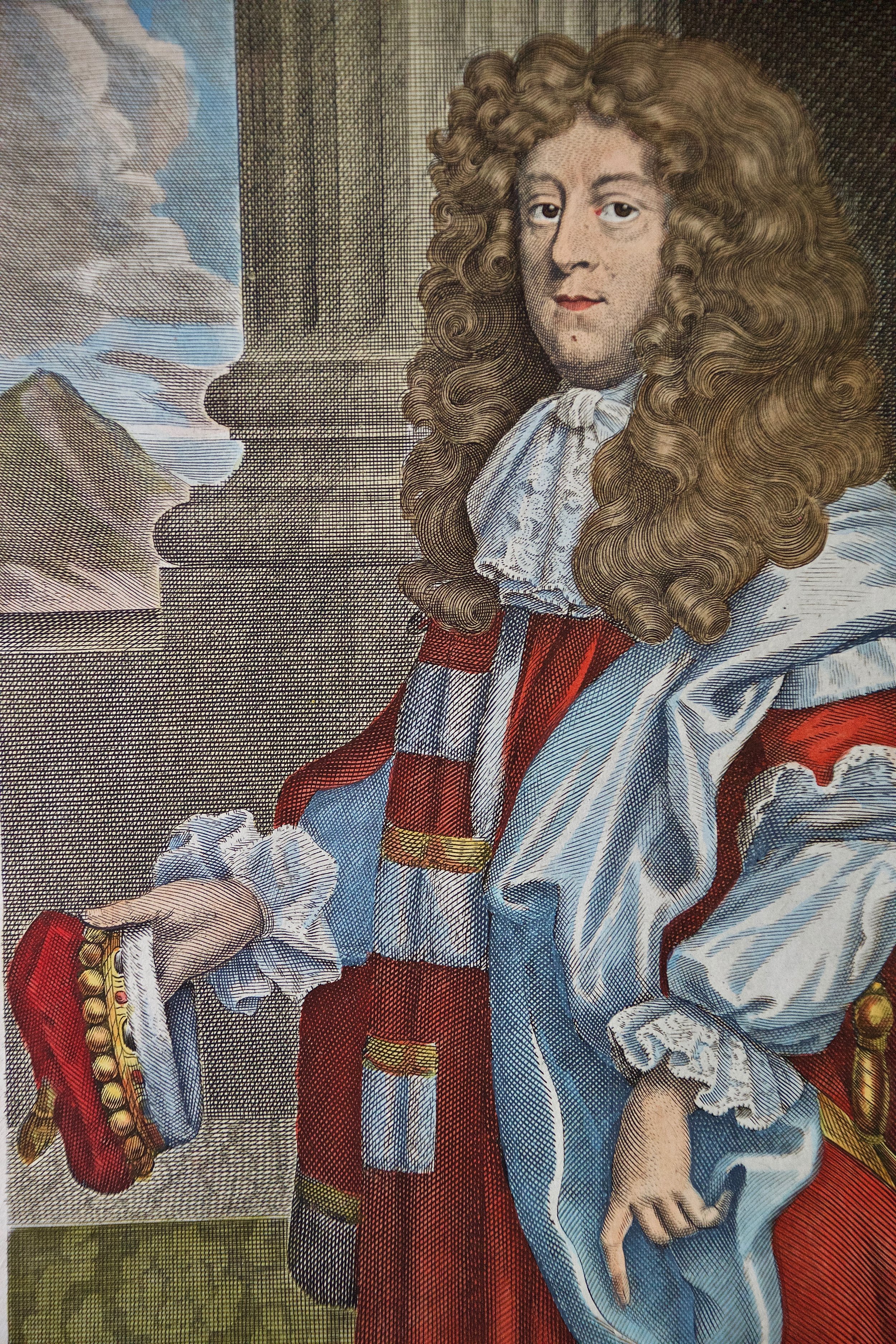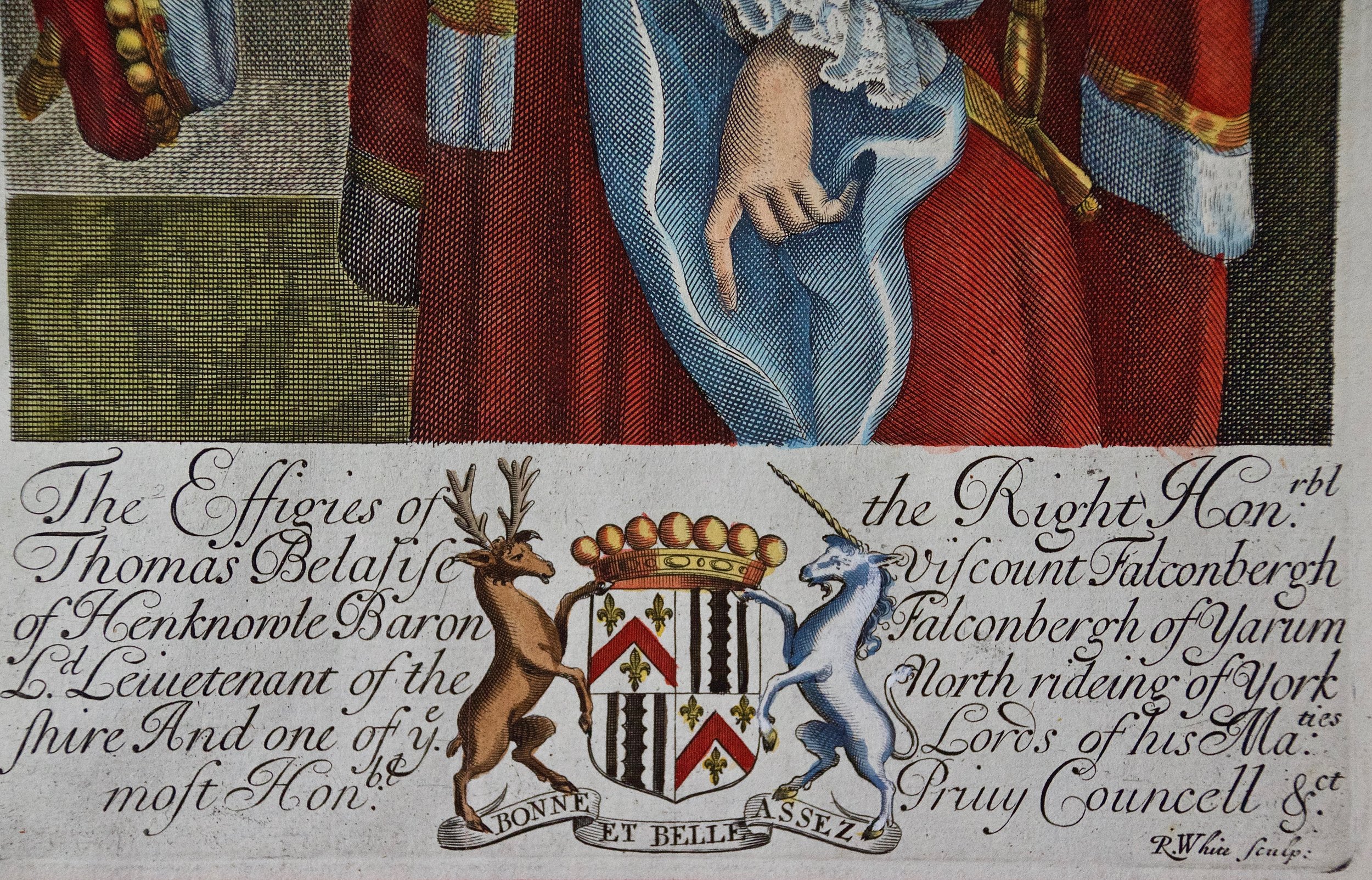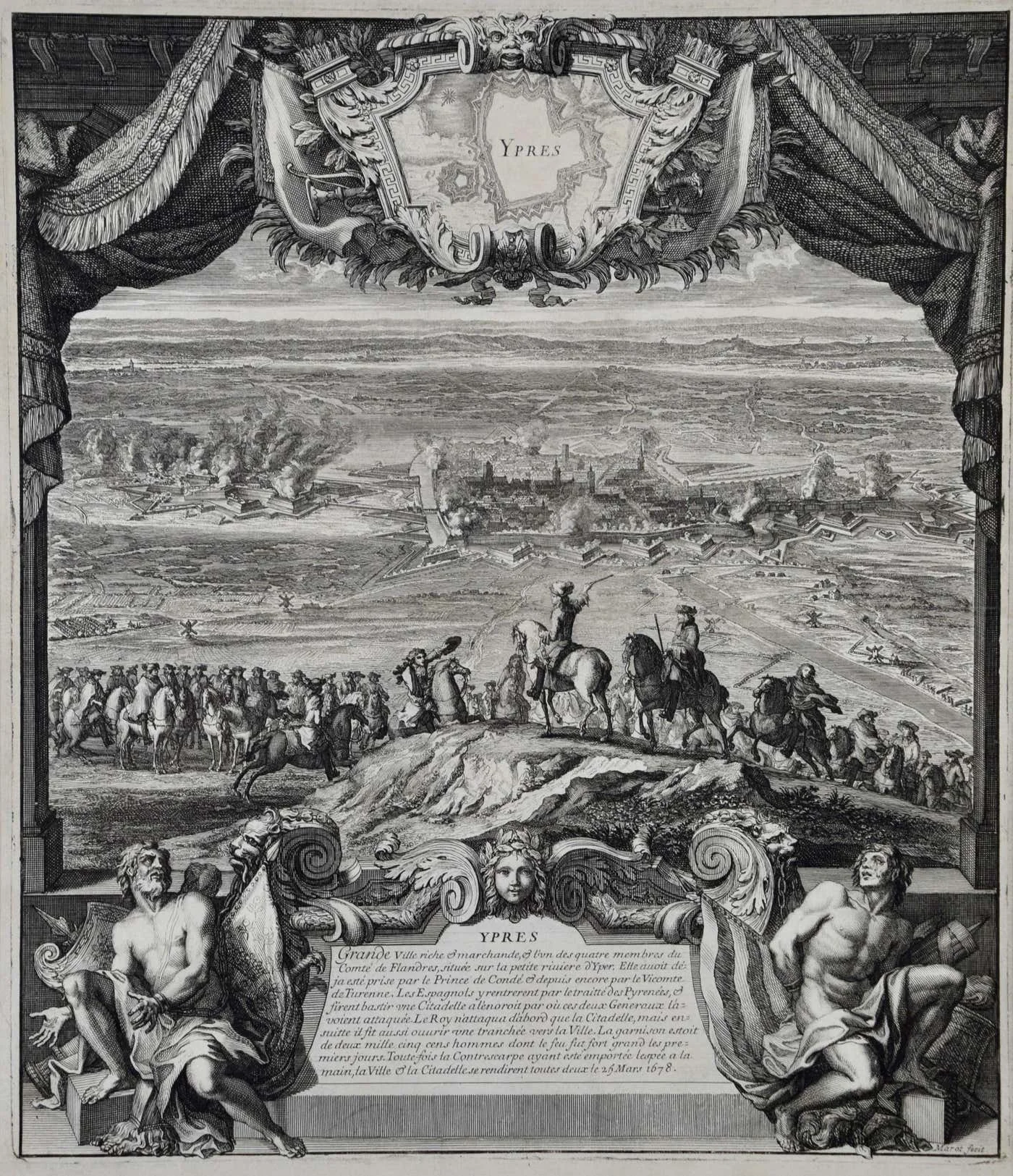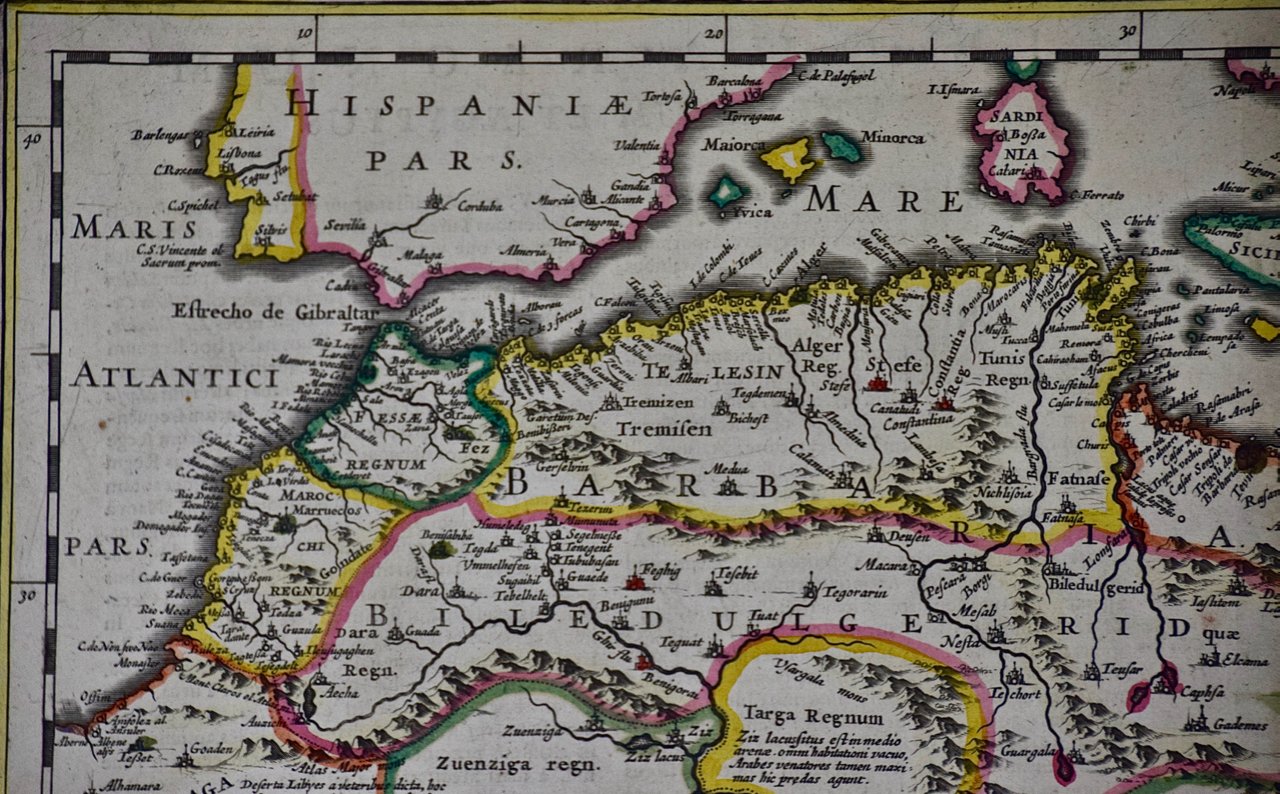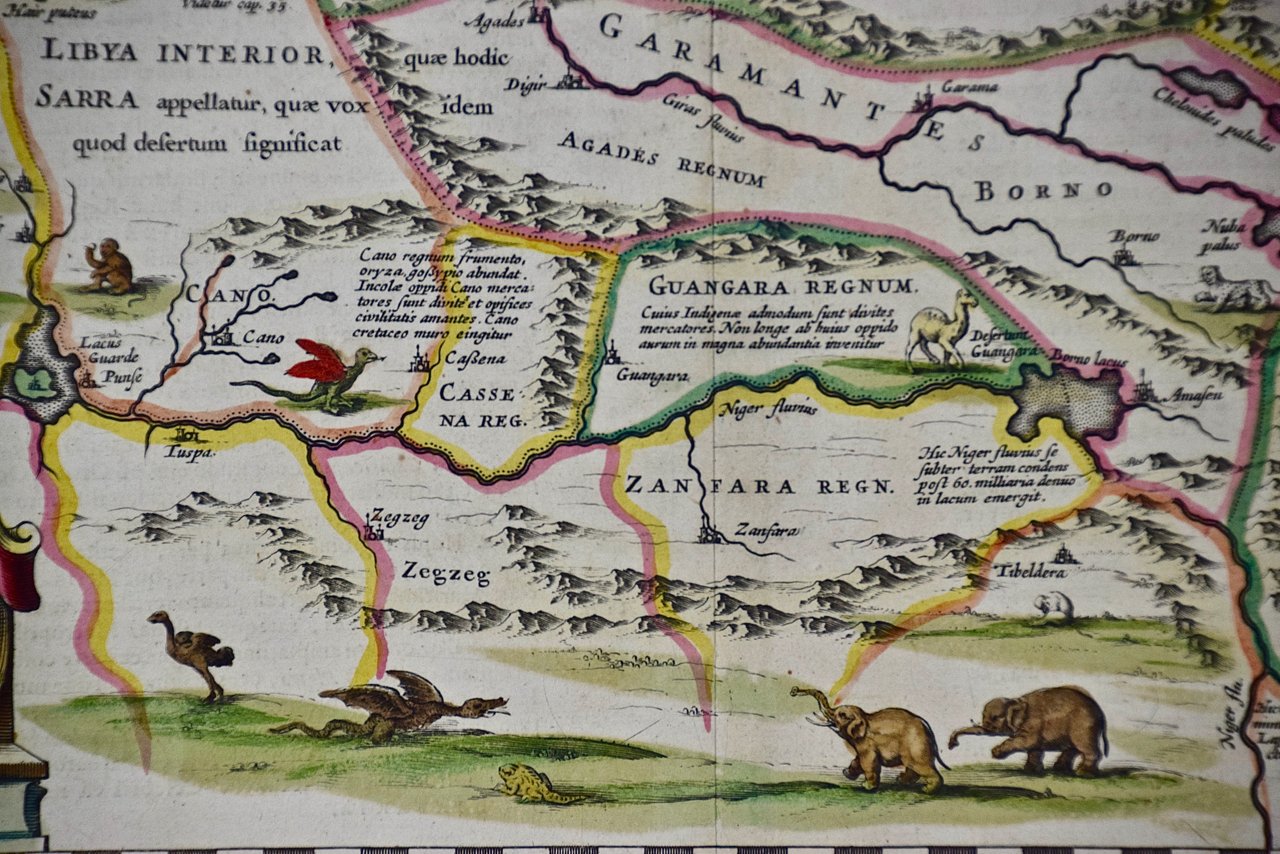The Heidelberg Tun: A Framed 17th Century Engraving of a Huge Wine Cask
"The Heidelberg Tun" is a 17th century engraving by an unknown artist. It depicts a famous huge ornamental wine cask that resided in the wine cellar of Heidelberg Castle. The cask shown here, built in 1664, is the second of four Heidelberg Tuns; the first was destroyed during the Thirty Years' War, between 1618 and 1648. This cask was built in 1664 when Karl Ludwig ordered Heidelberg cellar master Johannes Meyer to have a cask made even larger than the first one, which could hold 195,000 liters and have a dance floor on top. The Karl Ludwig cask survived the destruction of the castle during the War of the Palatinate Succession in 1689 and 1693 but was damaged. Repairs in 1702 were inadequate. The last two tuns were built in 1728 and 1751, with the latter still on view in Heidelberg Castle.
Creator: Unknown
Creation Year: 1664-90
Dimensions: Height: 22.94 in (58.27 cm) Width: 27.13 in (68.92 cm) Depth: 1.25 in (3.18 cm)
Medium: Engraving
Condition: See description below.
Reference #: 3453
"The Heidelberg Tun" is a 17th century engraving by an unknown artist. It depicts a famous huge ornamental wine cask that resided in the wine cellar of Heidelberg Castle. The cask shown here, built in 1664, is the second of four Heidelberg Tuns; the first was destroyed during the Thirty Years' War, between 1618 and 1648. This cask was built in 1664 when Karl Ludwig ordered Heidelberg cellar master Johannes Meyer to have a cask made even larger than the first one, which could hold 195,000 liters and have a dance floor on top. The Karl Ludwig cask survived the destruction of the castle during the War of the Palatinate Succession in 1689 and 1693 but was damaged. Repairs in 1702 were inadequate. The last two tuns were built in 1728 and 1751, with the latter still on view in Heidelberg Castle.
Creator: Unknown
Creation Year: 1664-90
Dimensions: Height: 22.94 in (58.27 cm) Width: 27.13 in (68.92 cm) Depth: 1.25 in (3.18 cm)
Medium: Engraving
Condition: See description below.
Reference #: 3453
"The Heidelberg Tun" is a 17th century engraving by an unknown artist. It depicts a famous huge ornamental wine cask that resided in the wine cellar of Heidelberg Castle. The cask shown here, built in 1664, is the second of four Heidelberg Tuns; the first was destroyed during the Thirty Years' War, between 1618 and 1648. This cask was built in 1664 when Karl Ludwig ordered Heidelberg cellar master Johannes Meyer to have a cask made even larger than the first one, which could hold 195,000 liters and have a dance floor on top. The Karl Ludwig cask survived the destruction of the castle during the War of the Palatinate Succession in 1689 and 1693 but was damaged. Repairs in 1702 were inadequate. The last two tuns were built in 1728 and 1751, with the latter still on view in Heidelberg Castle.
Creator: Unknown
Creation Year: 1664-90
Dimensions: Height: 22.94 in (58.27 cm) Width: 27.13 in (68.92 cm) Depth: 1.25 in (3.18 cm)
Medium: Engraving
Condition: See description below.
Reference #: 3453
Although the artist of this work is not known, based on the highly refined engraving technique showing great detail and realism in this print, it was must have been created by a skilled old master engraver. The engraving is presented in a bleached wood frame with a cream-colored mat and glazed with UV protected plexiglass. There are three vertical folds and one horizontal fold with mild separation at the lower portion of a vertical fold and some discoloration along folds on the right. Mild wrinkling in the lower margin centrally. Hand written old-appearing script in the lower margin which appears to be "Le Tonnaus de Heidelberg".
Provenance: The print was owned by the Sterling Vineyards Winery in Calistoga, California.
Mark Twain visited Heidelberg Castle and its wine cask, which he described in his book recounting his travels 'A Tramp Abroad': "Everybody has heard of the great Heidelberg Tun, and most people have seen it, no doubt. It is a wine-cask as big as a cottage, and some traditions say it holds eighteen hundred thousand bottles, and other traditions say it holds eighteen hundred million barrels. I think it likely that one of these statements is a mistake, and the other is a lie. However, the mere matter of capacity is a thing of no sort of consequence, since the cask is empty, and indeed has always been empty, history says. An empty cask the size of a cathedral could excite but little emotion in me. I do not see any wisdom in building a monster cask to hoard up emptiness in, when you can get a better quality, outside, any day, free of expense."









